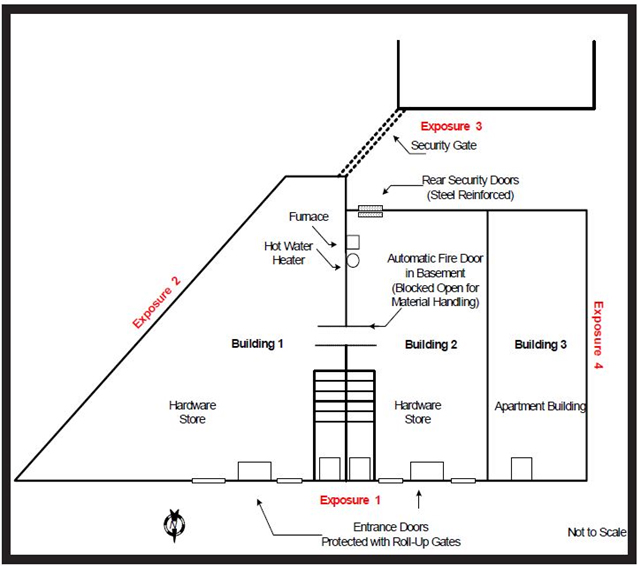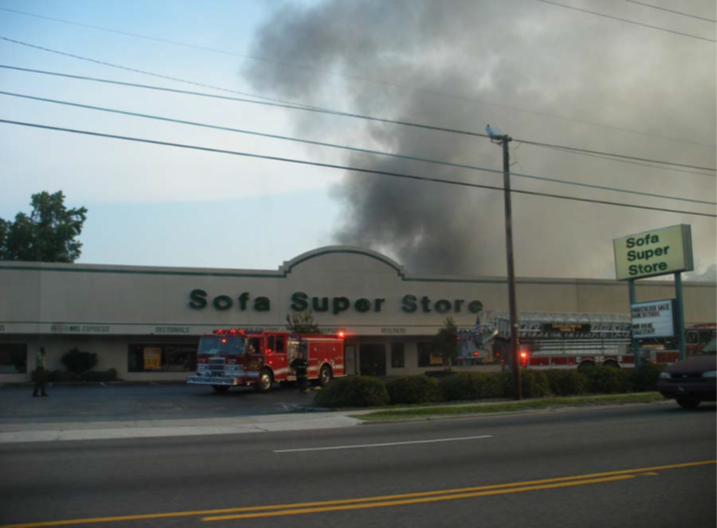By Joseph Pronesti
As I grow older, I tend to enjoy the third Sunday in June—Father’s Day—more now than I did when my beautiful daughters were smaller. It’s a day on which I reflect more on myself as a person and father; think about my father, who also was a firefighter; take stock in all with which God has blessed me; look toward the future of a not-so-distant retirement; and being a great grandfather (hopefully) and firefighter.
Father’s Day and the month of June also bring up some tragic anniversaries that I hope the fire service and young firefighters never forget about, learn from, and share the lessons learned. The years continue to fly by, and with that, we tend to go about our lives. It’s easy to forget about these events. As mentors, forget that there is a whole generation of firefighters today who were either not alive, in high school, or simply not in the service when these events occurred. The events were important when they occurred, but as time passes, they are forgotten everywhere except where the event took place.
This article is my attempt to help you remember and share these events as well as allow my own reverence to the 20 firefighters who perished them. Below are links to the audio, video and reports so you can remember and share them as you gather around the kitchen, table, golf course, or whereever Father’s Day finds you.
10-15: Tragedy on Com Ave: The Collapse of the Hotel Vendome
The Fires That Forged Us: Father’s Day Fire, 2001
The Fires That Forged Us: Sofa Super Store Fire
HOTEL VENDOME
The five-story Vendome Hotel was originally constructed in 1871 at the corner of Commonwealth Avenue and Dartmouth Street; it was remodeled in 1872 and numerous times thereafter, according to a very detailed Board of Inquiry (BOI) report from around 1890. A load bearing wall between the first and second floors was removed and replaced with a cast iron beam and column support system carrying the weight of an approximately 1,800-square-foot area. It was also highlighted in the report that this new support system was not tied together, and the two beams simply rested on the column.
It was the day before Father’s Day 1972 at approximately 1430 hours when the Boston (MA) Fire Department (BFD) received box alarm 1571 at the corner of Dartmouth and Newbury. The box was pulled by construction workers doing some work at the café inside the Hotel Vendome. The fire started on the fourth floor in a bathroom under construction. The fire raced upward and consumed much of the roof. At 1728 hours, while firefighters were controlling fires in the exterior mansard and cornice, the entire 1,800-square-foot area at the Southeast corner of the building collapsed, killing nine firefighters and injuring many others. In all, 23 children were left fatherless the day before Father’s Day 1972.

(1) Boston (MA) Fire Department (BFD) Ladder 15 sits crushed by the collapse of the Hotel Vendome. (Photo courtesy of the Board of Inquiry—BFD.)
In summary, the BOI report noted the following top factors as major contributors to the deadly collapse:
- The stresses under the cast-iron column were excessively high, a result from removing the bearing wall between the first and second floors at around the year 1890 and then replacing the wall with a beam and column support system. The masonry bearing walls were, at the time of the fire, approximately 100 years old, and the mortar exhibited very low strength characteristics, both in bond and bearing. This alteration was the major factor contributing to the building collapse.
- The addition of a heating and ventilating duct opening in the bearing wall in the area under the column during the 1972 alterations caused additional stress concentrations.
- The large amount of water pumped into the building during the fire provided the additional load needed to trigger the collapse. If the residual stresses in the building, however, had been within normal design limits, this water load should not have caused collapse of the structure.
In memoriam, we honor and remember the following brave BFD Jakes:
Lieutenant Thomas J. Carroll—Engine Company 32
Lieutenant John E. Hanbury—Ladder Company 13
Firefighter Charles E. Dolan—Ladder Company 13
Firefighter Joseph P. Saniuk—Ladder Company 13
Firefighter John E. Jameson—Engine Company 22
Firefighter Thomas W. Beckwith—Engine Company 32
Firefighter Paul J. Murphy—Engine Company 32
Firefighter Richard B. Magee—Engine Company 33
Firefighter Joseph F. Boucher Jr.—Engine Company 22
The BOI report as well as a wonderful podcast on this fire conducted by Chief Pete Lamb can be heard at accessed here: http://firefightertrainingpodcast.com/the-collapse-of-the-hotel-vendome-an-interview-with-captain-rick-connelly-bfd-ret.
THE BOI report can be read at https://www.dropbox.com/s/2vonftos82pjkv7/Vendome%20Hotel%20Report.pdf?dl=0
A fine Fire Engineering article on renovations from Greg Havel can be read at http://emberly.fireengineering.com/articles/print/volume-160/issue-7/features/ancient-buildings-pose-hazards-older-than-codes.html
Fire Department of New York (FDNY), Father’s Day 2001
“I’m trapped in the basement by the stairs. Come get me.” Those were the words uttered by Firefighter Brian Fahey from Rescue 4 after an explosion occurred during a June 17, 2001, fire at the Long Island General Supply neighborhood hardware store at 12-22 Astoria Boulevard in Queens. Unfortunately, Fahey, fellow Rescue 4 member Harry Ford, and Ladder 163 Firefighter John Downing passed away at this fire, which is sometimes known as the “forgotten fire” in FDNY lore as this event took place just months prior to 9/11. Two juveniles were in the rear yard of the building when they knocked over a can of gasoline. The gasoline ran under the rear door and into the basement, eventually finding the water heater. When the water heater kicked in, it ignited the gasoline; the resulting fire caused the explosion of a large propane tank illegally stored in the basement causing the massive explosion.

(2) 12-22 Astoria Blvd. (also known as Downing, Ford , and Fahey Way) in Queens, New York. (Photo courtesy of Google Maps.)
The hardware store was a Type III ordinary construction building that was two structures interconnected on the first floor featuring cellars with upper floor apartments. Fire doors were blocked open to allow free movement between the cellars, which were used for storage and had an abundance of hazardous materials inside.
The fire was reported at 1421 hours; an explosion occurred approximately 20 minutes later. Ford and Downing were crushed by falling debris from the explosion, and Fahey was trapped in the cellar, where he died from asphyxia because of smoke inhalation. (It should also be noted that Ford’s son, Harry Jr., followed in his father’s footsteps and became a member of the FDNY in 2016.)
FIGURE 1. NIOSH Report Sketch of the Buildings Involved.

Read the National Institute of Occupational Safety and Health’s report on this fire at https://www.cdc.gov/niosh/fire/reports/face200123.html.
Charleston (SC) Sofa Super Store Fire: The Charleston Nine
It is unfathomable that a decade has passed since this fire, which claimed the lives of nine firefighters. Ten years is a long time in our profession, and just think about how many new firefighters and officers your department has since sworn in who may have never heard of this event. When discussing this fire with them, I recommend that you do not concentrate on the line selection, i.e., booster lines or 1½-inch lines, but rather think about how the building, its contents and their influence on rapid fire spread, and the building’s construction led to such a fast spreading fire.
There are many pieces of literature devoted to this event. We all need to review the below video; listen to the accompanying audio (the first hour of the response); and study the fire spread, ventilation issues, and overall command and control of the fire written about in the National Institute of Standards and Technology report.

(3) The earliest photo of the front of the Sofa Super Store, taken at approximately 1916 hours. (Photo courtesy of Lindsay Ackermann.)

(4) Smoke begins to flow from the broken windows on both sides of the store entrance. This photo was taken at 1936 hours. (Photo courtesy of Stewart English.)
Listen, watch, and read about these brave Charleston firefighters, and then get out and study your “troublemaker” buildings with your firefighters. Happy Father’s Day! Enjoy your families, and if you have to work this Sunday like me, eat a good meal, and then take some time to honor and never forget these 21 brave souls.
AUDIO:
VIDEO:
The ‘Fog’ Part 5: The Fireground Clock
Are You Prepared for a Fire on Your Town’s Main Street?
The Deck Gun: The Forgotten Option, Part 2
 JOSEPH PRONESTI is a 26-year veteran of the Elyria (OH) Fire Department, where he is an assistant chief and shift commander. He is a graduate of the Ohio Fire Chiefs’ Executive Officer program and a lead instructor at the Cuyahoga (OH) County Community College Fire Academy. He is a contributor to fire service publications and sites, including Fire Engineering. He will be presenting a four-hour preconference classroom at FDIC International 2016 titled “Main Street Tactics and Strategies: Are You Ready?” He can be reached at efdcaptain33@gmail.com.
JOSEPH PRONESTI is a 26-year veteran of the Elyria (OH) Fire Department, where he is an assistant chief and shift commander. He is a graduate of the Ohio Fire Chiefs’ Executive Officer program and a lead instructor at the Cuyahoga (OH) County Community College Fire Academy. He is a contributor to fire service publications and sites, including Fire Engineering. He will be presenting a four-hour preconference classroom at FDIC International 2016 titled “Main Street Tactics and Strategies: Are You Ready?” He can be reached at efdcaptain33@gmail.com.

